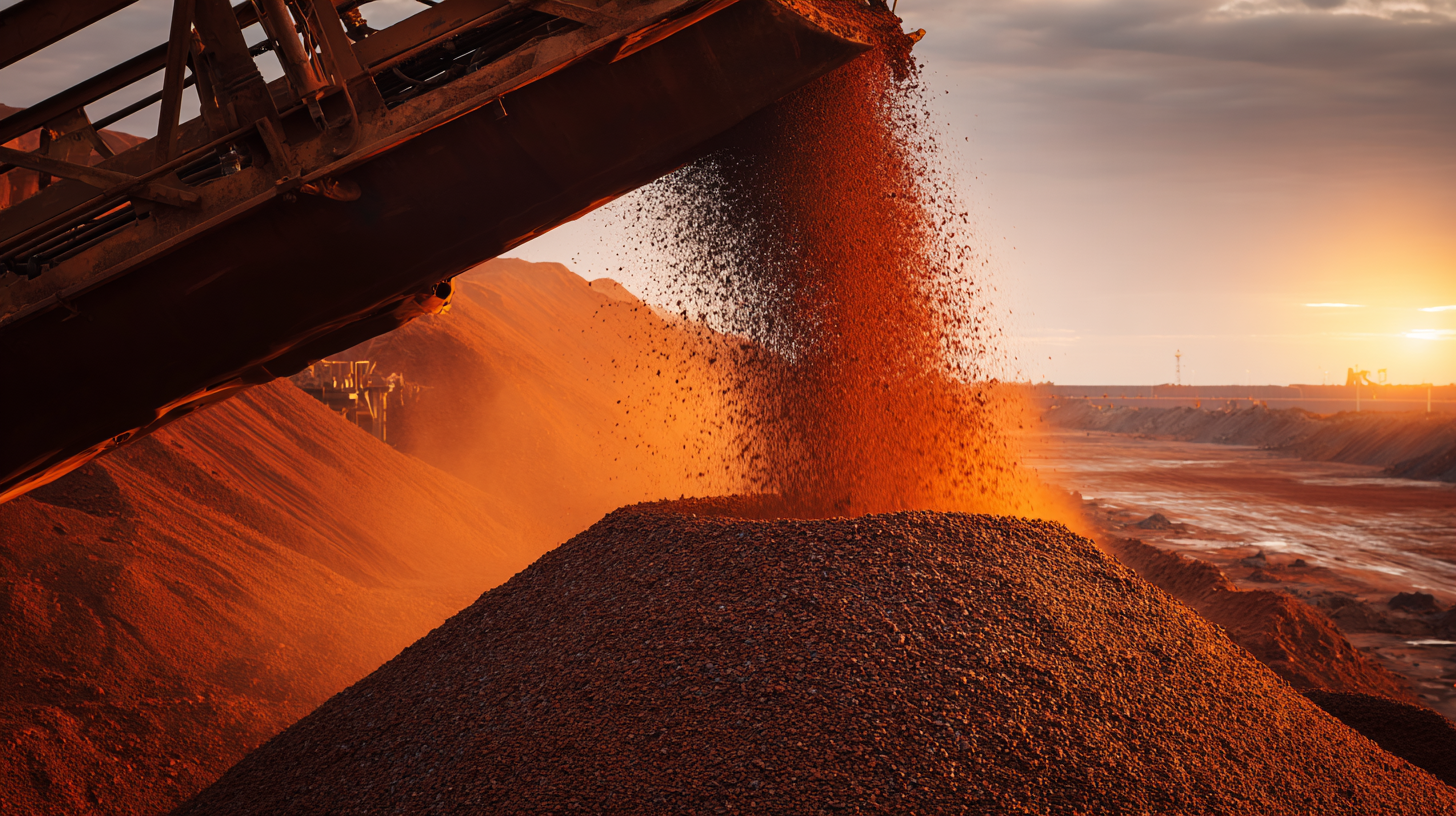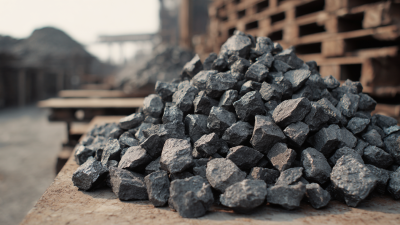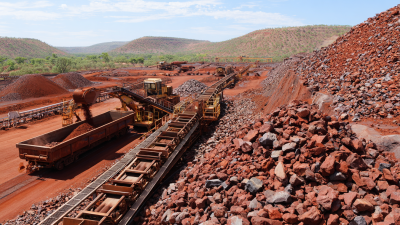 No. 14, Building 2, No. 367 Beijing Road, Chengdu Economic and Technological Development Zone (Longquanyi District)
No. 14, Building 2, No. 367 Beijing Road, Chengdu Economic and Technological Development Zone (Longquanyi District)

 Iron Ore Screening is a critical process in the mining industry, serving as the first line of defense in the efficient extraction and processing of valuable iron ore. As the global demand for iron and steel continues to grow, the significance of effective screening techniques becomes paramount. This outline delves into the science behind various iron ore screening methods, examining their mechanisms, advancements in technology, and their impact on operational efficiency.
From traditional approaches to cutting-edge innovations, the evolution of screening methods plays a pivotal role in optimizing resource recovery, reducing waste, and enhancing overall productivity in mining operations. Understanding these techniques not only highlights their importance in the field but also underscores the ongoing need for research and development to refine these processes.
Thus, this discussion aims to provide insights into the intricate relationship between iron ore screening and its vital role in the sustainable advancement of modern mining practices.
Iron Ore Screening is a critical process in the mining industry, serving as the first line of defense in the efficient extraction and processing of valuable iron ore. As the global demand for iron and steel continues to grow, the significance of effective screening techniques becomes paramount. This outline delves into the science behind various iron ore screening methods, examining their mechanisms, advancements in technology, and their impact on operational efficiency.
From traditional approaches to cutting-edge innovations, the evolution of screening methods plays a pivotal role in optimizing resource recovery, reducing waste, and enhancing overall productivity in mining operations. Understanding these techniques not only highlights their importance in the field but also underscores the ongoing need for research and development to refine these processes.
Thus, this discussion aims to provide insights into the intricate relationship between iron ore screening and its vital role in the sustainable advancement of modern mining practices.
Iron ore screening plays a critical role in enhancing mineral recovery rates within mining operations. As the demand for high-quality iron ore surges, effective screening techniques become increasingly vital. The International Iron and Steel Institute reported that in 2021, global production of iron ore reached approximately 2.5 billion metric tons, emphasizing the need for efficient methods to maximize recovery from this substantial output. By separating finer particles from larger ones, screening processes ensure that only the best ore is processed further, which directly influences the overall yield and profitability of mining operations.
The implementation of advanced screening techniques, such as vibrating screens and trommel screens, has shown remarkable results in improving recovery rates. According to a study by Mining Magazine, modern screening methods can boost recovery rates by up to 30%. Additionally, using innovative technologies like high-frequency screens enables miners to achieve more accurate separations, significantly enhancing the quality of the ore extracted. This precision not only reduces waste but also aligns with sustainable mining practices by optimizing resource use and minimizing environmental impact, thus making the overall mining operation more efficient and economically viable.
Recent advancements in iron ore screening technologies have significantly transformed the mining sector, driving efficiencies and minimizing waste. The introduction of automated screening systems, coupled with artificial intelligence, has streamlined the process, enabling mines to achieve higher throughput rates. According to a report by the International Council on Mining and Metals (ICMM), companies that have integrated advanced screening technologies have reported up to a 30% increase in overall operational efficiency, showcasing the tangible benefits these innovations bring to the industry.
Additionally, modern screening techniques reduce the environmental footprint of mining operations. Technologies such as high-frequency screens and integrated water management systems are designed to maximize recovery rates while minimizing excess waste. In a study by Global Mining Review, it was noted that improved screening processes could lead to a reduction of tailings by approximately 20%, significantly lowering the environmental impact of iron ore extraction. This focus on sustainability not only aligns with global mining trends but also enhances the economic viability of operations by conserving resources and reducing disposal costs.

Iron ore screening techniques play a critical role in mining efficiency and mineral recovery. Understanding key metrics for evaluating these techniques is essential for optimizing production processes. One significant metric is the screening efficiency, which indicates how effectively the screens can separate particles based on size. According to a report by Allied Market Research, improving screening efficiency can increase iron ore recovery rates by up to 20%, subsequently reducing operational costs.
Another key performance indicator is the throughput capacity of screening systems, which measures the amount of material that can be processed over a given time. Advanced screening technologies, such as High-Pressure Grinding Rolls (HPGR) and wet screening, have been shown to enhance throughput by as much as 30%, according to data from the International Journal of Mineral Processing. Additionally, the reduction of fines generation during screening is crucial for maximizing final product quality, with studies indicating that adopting the right screening methods can minimize fines by approximately 15%. Through close examination of these metrics, mining companies can make informed decisions that significantly boost their operational efficiency and profitability.
Iron ore screening is a crucial process in mining, but it comes with environmental impacts that must be addressed. The separation of iron ore from impurities often generates dust and noise pollution, contributing to air quality degradation and affecting local ecosystems. Additionally, the water runoff from mining sites can lead to the contamination of water bodies, posing risks to aquatic life and community health. Therefore, the mining industry must adopt sustainable practices to mitigate these effects.
One effective method to reduce environmental impact is the implementation of dust suppression techniques, such as water sprays or chemical dust suppressants. These can significantly lower airborne particulates during screening. Additionally, investing in noise reduction technologies can help minimize disturbances to both wildlife and surrounding communities. Companies are also encouraged to engage in regular environmental impact assessments and exploration of alternative resources to limit reliance on iron ore mining.
**Tips:** Always prioritize the adoption of eco-friendly technologies during the mining process. Engage with local communities to understand their concerns and incorporate their feedback into mining practices. Prioritizing sustainability not only benefits the environment but also enhances the company’s reputation and fosters long-term relationships with stakeholders.
The comparative analysis of different iron ore screening methods reveals significant discrepancies in both efficiency and economic benefits. According to a report from ResearchGate, traditional screening techniques often fall short in productivity, with efficiency rates hovering around 60-70%. In contrast, advanced technologies like high-frequency screens and vibrating screens can elevate this efficiency to over 90%, resulting in a considerable increase in quality and quantity of ore extracted. This technological leap not only optimizes resource utilization but also reduces operational costs, enhancing overall profitability in mining operations.
Moreover, data from the Australian Bureau of Statistics indicates that improved screening methods can lead to cost savings up to 30% in material handling and processing. As iron ore prices fluctuate, the importance of cost-effective screening becomes paramount for mining companies seeking sustainable operations. By employing modern screening techniques, miners are not only able to increase their yield but also minimize waste, making a compelling case for investment in advanced technologies that align with both economic and environmental goals in the iron ore sector.






